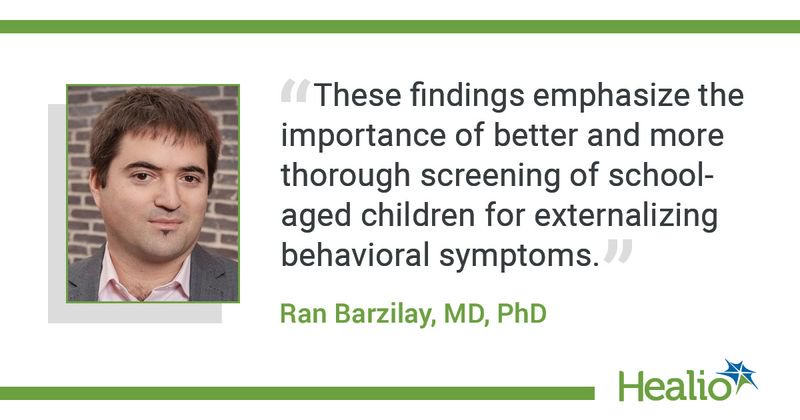ADHD medications may lower suicide risk in kids
Click Here to Manage Email Alerts
Children with substantial externalizing symptoms who received ADHD medications had lower odds for suicidality, a cohort study showed.
Researchers wrote in JAMA Network Open that “there is a critical need to identify modifiable risk and protective factors” for suicide. Previous research, they added, has shown that psychostimulants may reduce suicidal behavior in patients with ADHD, but existing studies lack information on symptom severity and other confounders.

“Thus, more data are needed on the potential relevance of ADHD medications use in children, which is increasing globally, to suicide prevention,” the researchers wrote.
To learn more, they examined cross-sectional and 1-year-longitudinal associations among 11,878 children (mean age at baseline assessment = 9.9 years; 52.2% boys; 74.1% white), from the Adolescent Brain Cognitive Development (ABCD) Study, which took place from 2016 to 2019.
“In an ideal world, we want to test a medication effect on suicidality with a randomized prospective trial,” Ran Barzilay, MD, PhD, an assistant professor at the Lifespan Brain Institute of Children’s Hospital of Philadelphia, said in a press release. “But given the challenges of conducting such studies, we are obligated as a society and as scientists to generate clinical insights using data collected in large-scale observational studies of children.”
Barzilay and colleagues found that among the entire study population, 8.5% were administered ADHD medications and 8.8% indicated previous or current suicidality. Externalizing symptoms (median = 1; range 0-29) were tied to suicidality, and a change of one symptom influenced the association (OR = 1.34; 95% CI, 1.26-1.42), as did ADHD medication treatment (OR = 1.32; 95% CI, 1.06-1.64). In addition, the use of ADHD medication was tied to less suicidality in children with more externalizing symptoms (significant symptom-by-medication interaction, B = 0.25; standard error = 0.086; P = .004).
In children who were not administered ADHD medications, there was a link between more externalizing symptoms and greater odds for suicidality (for each change in one symptom, OR =1.42; 95% CI, 1.33-1.52). Conversely, in children who were administered ADHD medication, there was no such link (OR = 1.15; 95% CI, 0.97-1.35).
The findings remained similar even when covarying for confounders, including risk and protective factors for suicidality, and were duplicated in a 1-year longitudinal follow-up period.
“Given the connection between childhood suicidality and poor adult mental health, these findings emphasize the importance of better and more thorough screening of school-aged children for externalizing behavioral symptoms,” Barzilay said. “These symptoms are treatable and addressing them early has the strong potential to prevent and mitigate serious mental health issues later in life.”
The researchers also wrote that the findings reinforce the idea of using a “dimensional approach” to treating ADHD, saying that “observing externalizing disorders along a continuum holds promise for elucidating more precise associations with other forms of psychopathology, including suicidality.”
